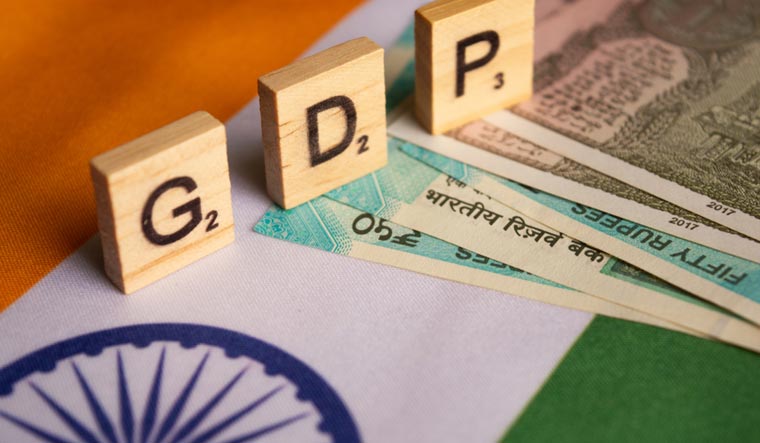India’s gross domestic product (GDP) growth is expected to rebound to 11 per cent in the next fiscal year 2021-22 after an estimated 8 per cent contraction in the current year, as per CRISIL. This rebound is expected to be driven by people learning to live with the new normal, flattening of the Covid-19 affliction curve, rollout of vaccinations, and investment-focused government spending. CRISIL, however, estimates that as in the current fiscal the pace of growth during the next quarter will differ in the first half and the second halves. While the first half next fiscal will benefit optically due to the low-base effect, the second half would see a more broad-based pick up in economic activity owing to a commodity price lift, large-scale vaccinations and likely stronger global growth.
“The journey from the pervasive darkness cast by an unprecedented pandemic to the beginnings of a clawback has not been easy. Policymakers and regulators have primarily facilitated the revival. India’s medium-term growth now hinges on a kick start of the investment cycle. There are early positive signs, powered by government spending such as through the National Infrastructure Pipeline, demand-driven capex, and the Centre’s Production-Linked Incentive (PLI) scheme.” remarked Ashu Suyash, Managing Director and CEO, CRISIL.
However, it is expected that the recovery will not be easy as there are aftereffects of the pandemic especially on the small businesses and the urban poor. On the other hand, the rural economy has been more resilient versus urban, and services are lagging manufacturing in recovery. Trade has also normalised faster than the rest of the economy, with both exports and imports scaling pre-pandemic levels. While exports are recovering well for large industries, and agriculture and allied sectors, they remain weak for labour-intensive, small-enterprise driven segments such as gems and jewellery, garments, and leather products due to their discretionary nature.
“ We expect GDP growth to average 6.3 per cent between fiscals 2023 and 2025. That would be lower than the 6.7 per cent average growth seen in the decade preceding the pandemic, but higher than the 5.8 per cent average in the three fiscals prior. Despite the growth, the Indian economy will suffer a permanent loss of 11 per cent of GDP. In real terms, the size of the economy next fiscal will be a mere 2 per cent bigger than what it was in fiscal 2020. Importantly, the dynamics of domestic demand and trade continue to be unfavourable for small businesses. Policy support, therefore, must continue for them and for the urban poor, who have borne the brunt of the pandemic,” observed Dharmakirti Joshi, Chief Economist, CRISIL.
CRISIL further expects that during the next fiscal, many pieces can fall into place leading to 20-25 per cent overall growth in investments to Rs 14.6 lakh crore. The push by the Centre and states, especially to roads, railways and urban transport, is expected to drive up overall infrastructure investments by 17-20 per cent.
Corporate capex will see 45-55 per cent growth driven by trends such as large companies in core industrial segments, which have gained market share and are operating at higher-than-industry average utilisation rates, pushing the pedal on capex after staying away last fiscal; and time-bound PLI-driven projects. Among the core industrial segments, cement and metals are expected to see healthy investments, while for other sectors, a meaningful recovery will be at least two years away.
As per CRISIL, bank credit is expected to grow at 400-500 basis points (bps) higher at 9-10 per cent next fiscal, riding on economic recovery, and policy and regulatory spurs. It is observed that while bank credit growth had contracted 0.8 per cent in the first half of this fiscal, it recovered sharply in the third quarter by growing 3 per cent sequentially. In the fourth quarter of the current fiscal, too, it is expected to clock 3 per cent sequential growth. Government measures, including the Rs 3 lakh crore Emergency Credit Line Guarantee Scheme, have been supportive and have driven this. As far as the NBFCs are concerned, CRISIL observes that they have navigated a raft of headwinds for over two fiscals culminating in de-growth in the current fiscal but are set to grow again, but at a relatively subdued 5-6 per cent next fiscal, compared to 18 per cent between fiscals 2014 and 2018.
The CRISIL report also points out that inflation has risen across all three categories: food, fuel and core--in the pandemic year. The rise in food inflation has also been understandably linked to supply side disruptions (both domestic and international) and unseasonal rains towards the end of monsoon in the country. An uptick in core inflation (an indicator of underlying demand conditions) during an economic slump has however been surprising. The report has also observed that exports are recovering well for large industries and the agriculture and allied sectors, but remain weak in low end manufacturing, a segment that creates significant employment for the low and semi-skilled workforce.
On the global economy front, the CRISIL report observes that vaccine approvals and rollouts are expected to strengthen economic recovery. However, the new wave of infection plus virus variants and more stringent lockdowns in some advanced economies pose risk to growth. The fiscal support announced towards the end of the year (for instance in the US and Japan) is expected to help advanced economies and exports of their trading partners. It is also expected that all the major central banks globally are likely to maintain status quo on monetary policy and use unconventional measures until recovery is well entrenched. CRISIL also observes that oil prices are expected to rise from the low base of 2020, banking on global recovery in demand. It is expected that the global trade volume forecast will go up after collapsing last year, but services trade is expected to recover more slowly than merchandise volumes.





